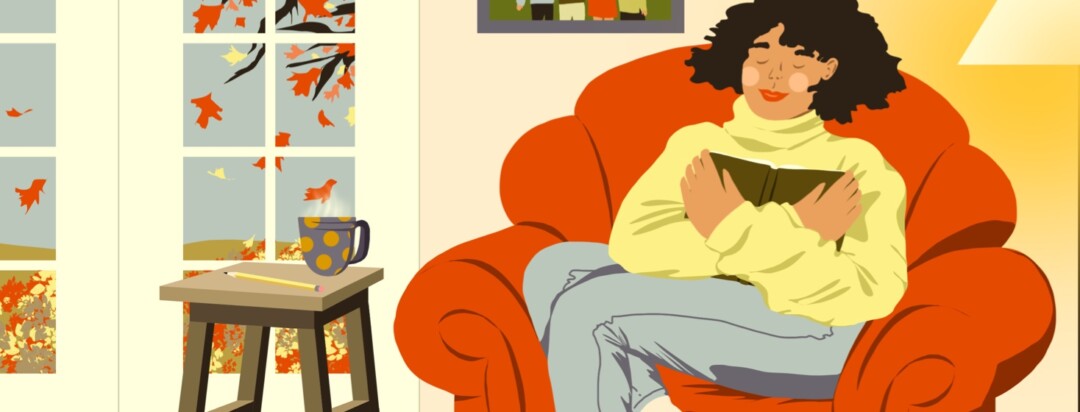Using Hygge to Cope With RA
Every fall as the weather turns colder and the leaves begin changing from green to red and orange, I curl up with a cozy blanket (and usually some ibuprofen) and use the power of hygge (pronounced "hoo-gah") to cope with my rheumatoid arthritis.
Hygge is a Danish practice focused on cultivating warmth and comfort as a way to help cope and improve one’s physical and mental state. Think simple, cozy pleasures — warm blankets, warm drinks, fireplaces, a good book, quality time with friends and family, and carving out time to rest and relax. Hygge is all about enjoying the present and focusing on simple comfort and pleasures that make life worthwhile.1
What is hygge?
Hygge, roughly translating to "coziness" in its native language, originated in Denmark. This practice focuses on creating an environment and experiences with warmth and comfort to promote overall well-being, both physically and mentally.1
Many hygge practices are centered around creating comfort in spaces such as your home by using warm blankets, setting low and calming lights such as fireplaces and candles, drinking warm drinks, and engaging in activities that bring comfort. When I think of hygge, I picture someone in a wool sweater curled up next to a fireplace with a hot cup of tea in hand, reading their favorite book with a blizzard outside.
However, hygge is very individualized and can look many different ways for various people in any season. In the end, the goal is all about finding comfort and relaxation with simple experiences in the here and now.
How I use hygge to cope with RA
There isn’t much in the available literature about how hygge is used in the setting of chronic illness, but I think it’s an interesting avenue to explore.
Before I even knew that hygge was a thing, I was always drawn to the idea of making the times when I was down for the count more enjoyable in whatever way I could. That often meant curling up with a warm drink and heated blanket when I battled overwhelming fatigue and pain. Creating a cozy "nest," as I used to call it, made living with chronic pain a smidge easier to tolerate. If I couldn’t enjoy the space my body was in at the moment, at the very least I could enjoy the comfort.
When I learned of the term "hygge," I was surprised to realize that I had been practicing just that! Now, I try to think of hygge as a way to cope with my chronic illness and even the other less physical stresses in my life. Give it a try!
Creative ways to manage your RA using hygge
As I mentioned above, everyone’s hygge will look different, and that’s why hygge is such an important practice — because it’s universal. Below are a few examples of hygge to spark your creativity.
Enjoy cold weather favorites, including:
- Using soft lights such as a fireplace, candles, or fairy lights
- Enjoying a warm drink such as tea, coffee, or a hot toddy
- Reading a good book or listening to an audiobook
- Curling up in cozy layers such as blankets, socks, or slippers
Seek out meaningful social gatherings, like:
- Meeting friends out for a drink or meal and sitting on a patio
- Hosting a game and pizza night
- Creating a monthly book club
Go on renewing nature outings, such as:
- Taking a bike ride on your favorite path (solo or with friends)
- Spreading out a picnic blanket and hanging out in the sun
- Picking a wildflower bouquet and displaying it in your home
Featured Forum
View all responsesRemember that whatever you do in the name of hygge, the ultimate goal is to provide you with feelings of coziness and comfort. Enjoy!
Have you ever heard of “hygge”? What is your idea of a hygge activity? Share in the comments below!

Join the conversation